USDA Soil Taxonomy: Soil Orders And Their Major Characteristics
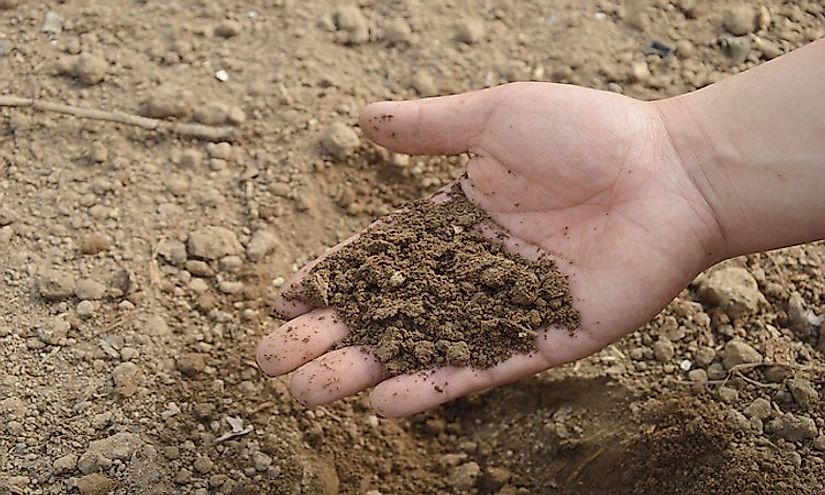
The soil is not only important in agriculture but also has a broad range of uses such as influencing the type of construction, conservation measures, biodiversity of an area, and nature of water in an area among other things. To identify, manage, and use soil effectively, scientists have developed a soil taxonomy system that contains several details about the soil ranging from general to specific details. The general level of soil classification in the US system is the soil order of which the soil is placed in 12 categories. The soil order is based on one or a few key chemical, physical, or biological feature that distinguish one soil order from the other orders.
12. Vertisols -
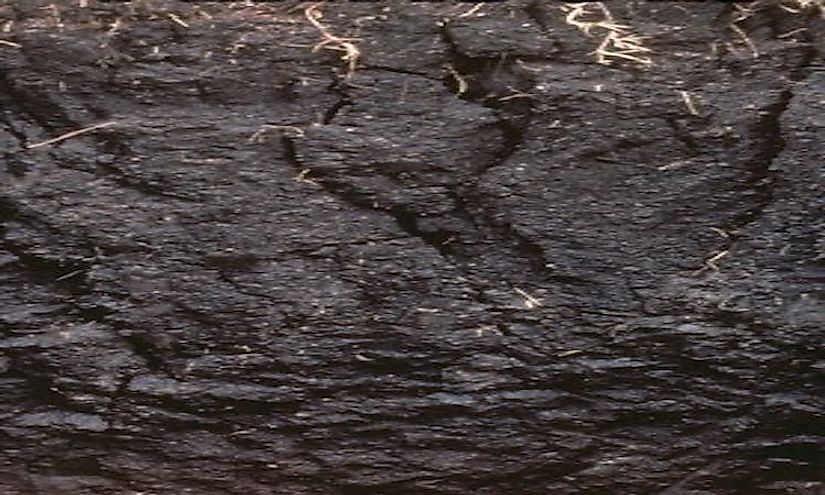
Vertisols is a term that traces its origin from a Latin word verto which means turn. Vertisols soils are clay-rich that shrinks and swells dramatically. The soil shrinks as it dries and swells as it gets wet. Vertisols forms a large crack that maybe more than one meter deep and several centimeters wide when dry. These deep cracks are often referred to as gilgai. The movement of Vertisols may cause buildings foundations to crack and roads to buckle. The soil is fertile because of the high clay content. However, water is retained on the surface when wet. Vertisols occupy about 2.4% of the global surface and 1.7% of the US glacier-free surface.
11. Spodosols -
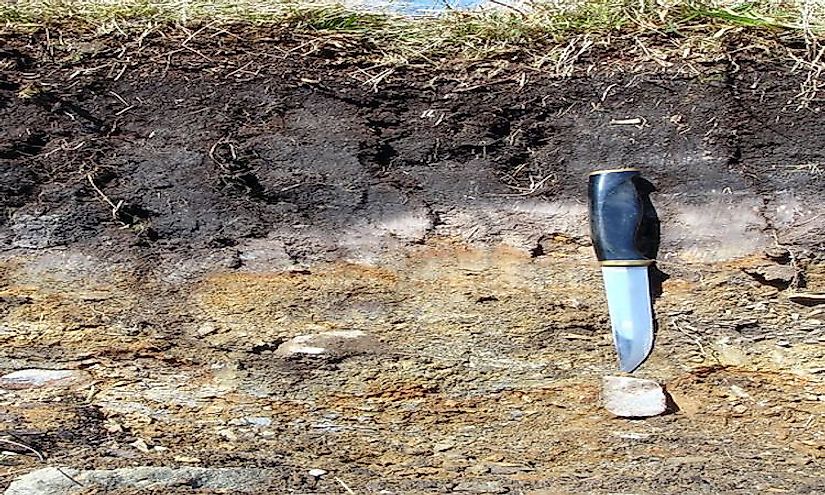
Spodosols are one of the most attractive soils having a dark surface underlain by ashy gray layer. The soils are formed when the rain water interacts with the vegetative litter such as leaves to form an organic acid. The organic acids dissolve other nutrients such as iron and other organic matter in the topsoil and eluvia which then move to the subsoil horizon. Spodosols develop in sandy and loam soil in humid regions of the world. The soil is acidic and has low fertility and clay content a characteristics common in the boreal forest. Spodosols occupy about 4% of the globe and 3.3% of the US glacier-free land.
10. Mollisols -
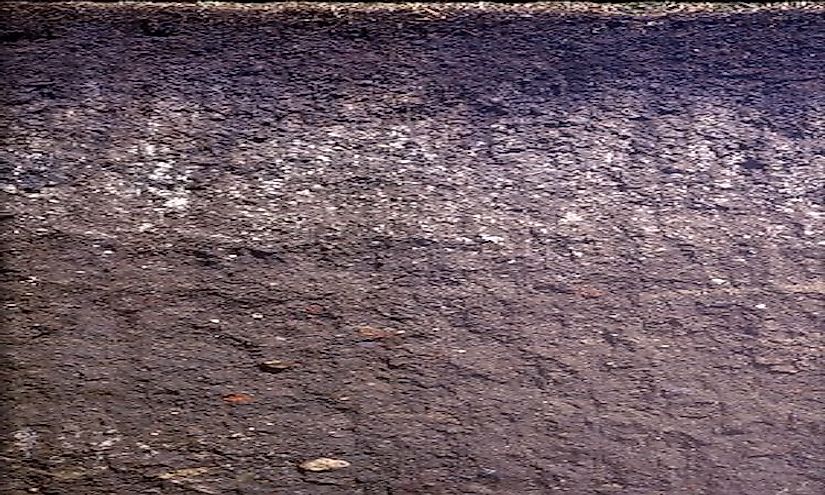
Mollisols are grassland soils that are dark colored on the surface and are highly fertile and rich in chemicals such as calcium and magnesium. The dark surface of the Mollisols is as a result of the continuous addition of the organic matter to the already existing soil by the roots of plants such as a prairie. Mollisols soils are common in areas characterized by dry climatic seasons making up approximately 7% of the globe and 22% of the US glacier-free land often the grassland areas.
9. Histosols -
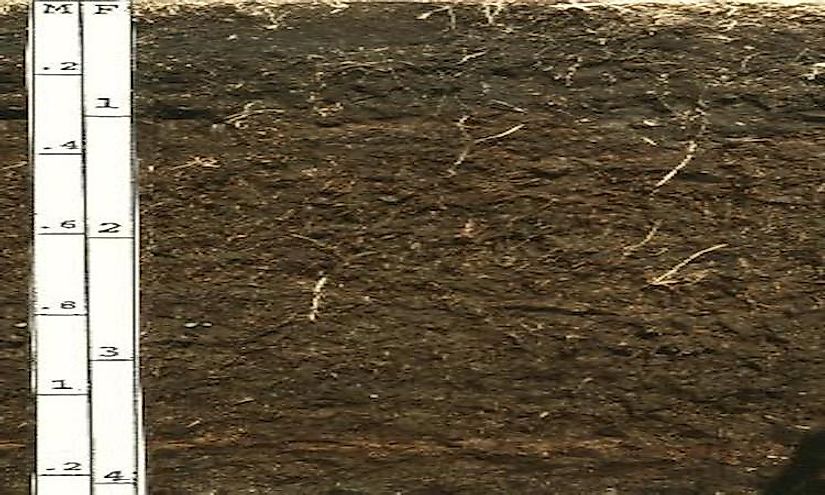
Histosols soils are composed of the organic material in the upper portion and contain soil commonly called bogs, peat land, and fens. The soils are formed when the organic matter like leaves decomposes slower than they accumulate due to the slow microbial decay rates, especially in extremely wet areas. Histosols are only productive when well drained but are not suitable for the construction of roads or foundation for buildings. The soils make up about 1% of the globe and 1.3% of the US glacier-free land.
8. Entisols -
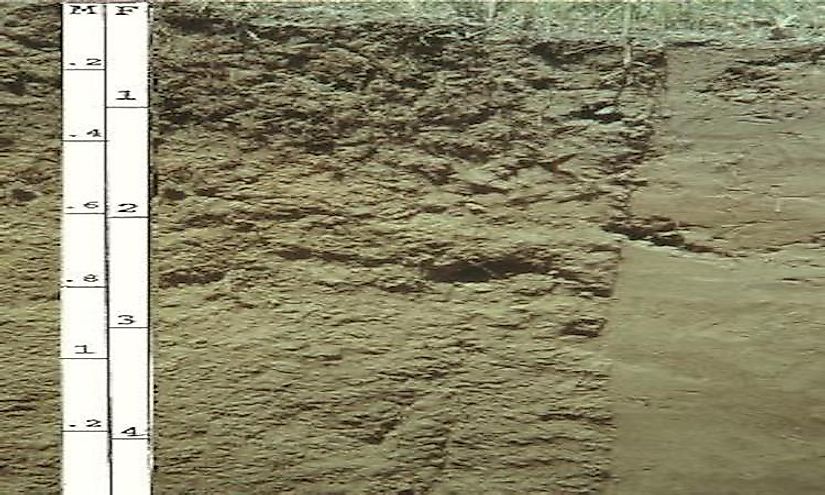
Entisols is the last order in the soil taxonomy that inhibits little or no soil development other than the availability of the identifiable topsoil horizon. It is a most common soil order by surface area and occurs in areas where there are recently deposited sediments where deposition of the sediments is faster than the rate of soil development. Entisols soils are located in the regions characterized by active flood plains, landslide areas, dunes, and even retreating glacier. The soils are common in almost all the environments. Entisols makes the second largest group of soil occupying 16.3% of the globe and 12.2% of the US glacier-free land.
7. Andisols -
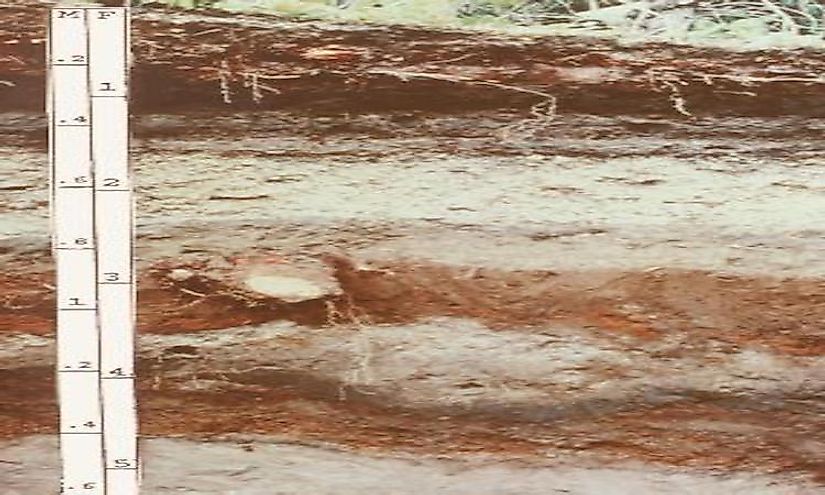
Andisols, derived from a Japanese word Ando which means black soil, are formed from the weathering of volcanic material in minerals in the soil characterized by the poor crystal structure. The materials forming the Andisols have a high capacity to hold nutrients and water making the soil more fertile and very productive. Andisols is made up of weathered soil with much volcanic glass and occur in areas with averagely high rainfall and cool temperatures. They are also easily erodible, especially on the slopes of the mountains. Andisols makes about 1% of the globe and 1.7% of the US glacier-free land.
6. Ultisols -
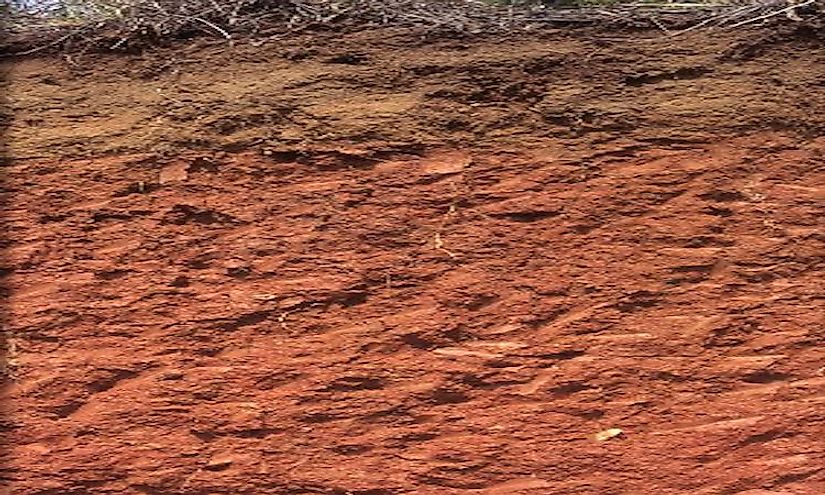
Ultisols are soils formed in humid areas through intense weathering. The soils contain subsoil horizon with translocated clay and are acidic in nature. Most nutrients in the Ultisols are held on the surface of the soil, but the soil is generally of low fertility and can only be more productive if fertilizers are applied. Ultisols occupies about 8% of the globe and 9.6% of the US glacier-free land
5. Oxisols -
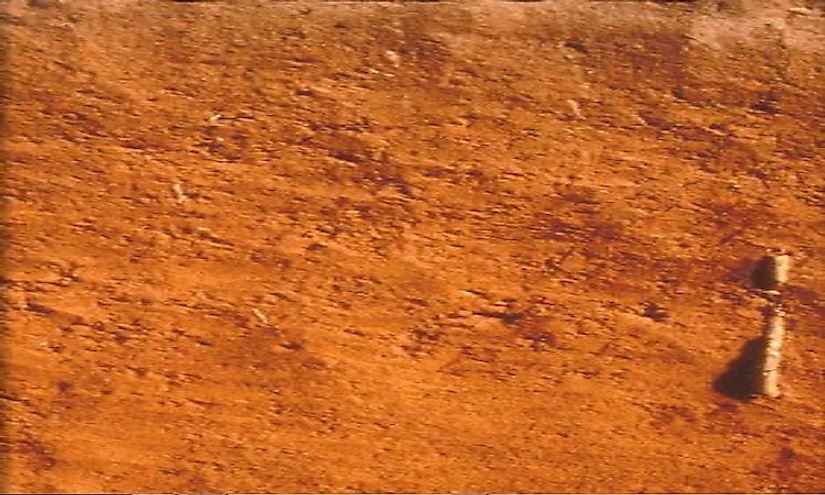
Oxisols are soils found in the tropical and subtropical regions dominated by iron oxide and highly weathered clay minerals. The soils have a well-developed profile and are located on gently sloping land surfaces that have been stable for a while. Oxisols are featureless without clearly marked layers or horizons. The soils are of low nutrient content and fertility because of the high weathering but can be made more productive by use of fertilizers. Oxisols soils cover about 8% of the globe and less than 0.01% of the US glacier-free land.
4. Inceptisols -
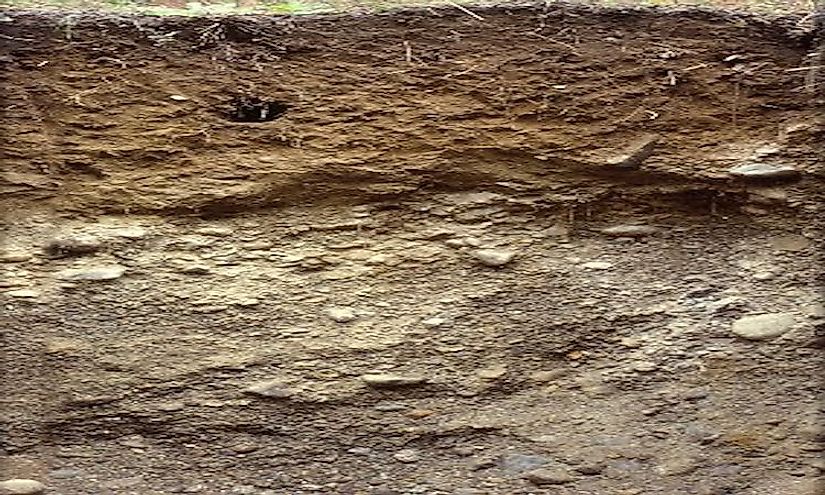
Inceptisols have almost similar characteristics as Entisols but exhibiting a moderate degree of soil development beginning at the B horizon. The soil lacks much of clay and nutrient accumulation in the subsoil and occurs within a broad range of parent material and different weather conditions. Inceptisols have several different characteristics because of the wide distribution and occurrence. The soils are continuously eroded or contain young deposits on the landscape. Inceptisols occupy approximately 15% of the globe and 9.1% of the US glacier-free land.
3. Gelisols -
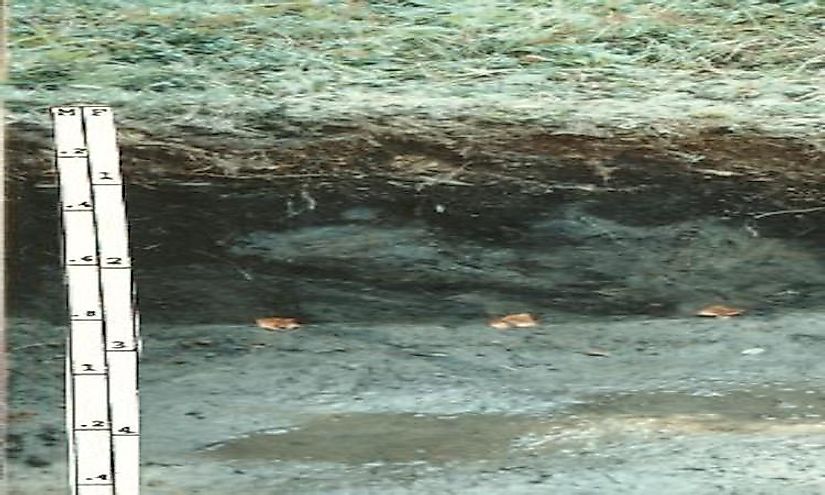
Gelisols, borrowed from Latin word gelare which means freeze, are permanently frozen soil or are permafrost within 100cm or has evidence of permafrost on or near the soil surface. The soils are found in the Arctic and Antarctic regions as well as places of high elevation. The permafrost on the soil surface influences the land use on the downward movement of water. The permafrost also restricts the penetration of plant roots hindering the growth of most plants. Gelisols occupy about 9% of the globe and 7.5% of the US glacier-free land.
2. Aridisols -
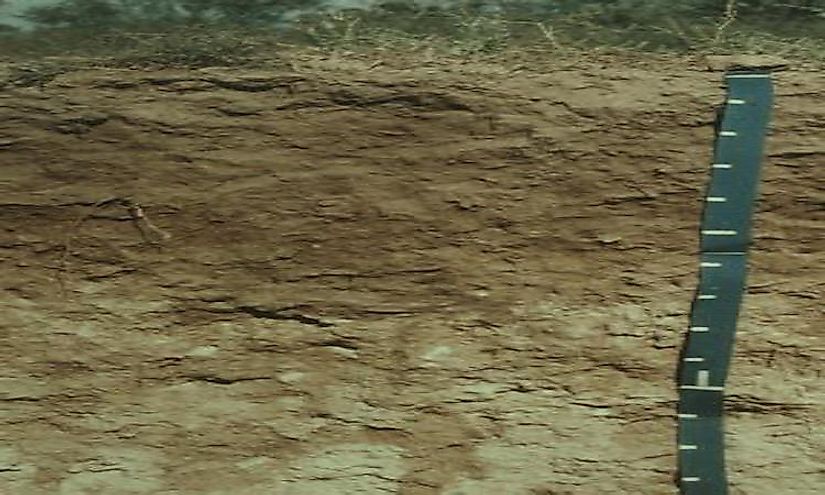
Aridisols are soils that occur in dry areas that cannot support plants which are adapted to regions that are extremely dry or too wet. The dry climate under which the soils are found restrict weathering processes. Aridisols contain an accumulation of minerals and nutrients such as salt, gypsum, and carbonates. The soils are found in both hot and cold deserts worldwide occupying 12% of the globe and 8.8% of the US glacier-free land.
1. Alfisols -
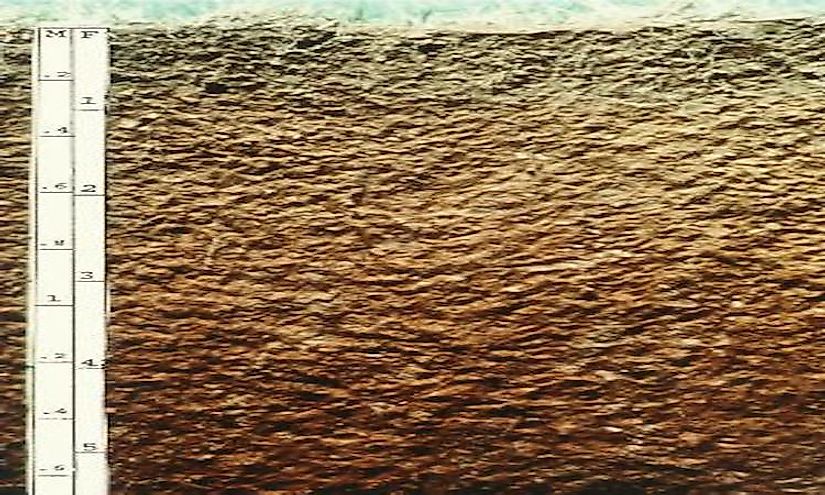
Alfisols are soiled with the same characteristics as Ultisols but are not intensively weathered and are less acidic. They are inherently more fertile compared to Ultisols with high-to-medium saturation. Alfisols are common in similar climatic condition as Ultisols under forested vegetation and are more common than the Ultisols occupying 9% of the globe and 14.5% of the US glacier-free land.











